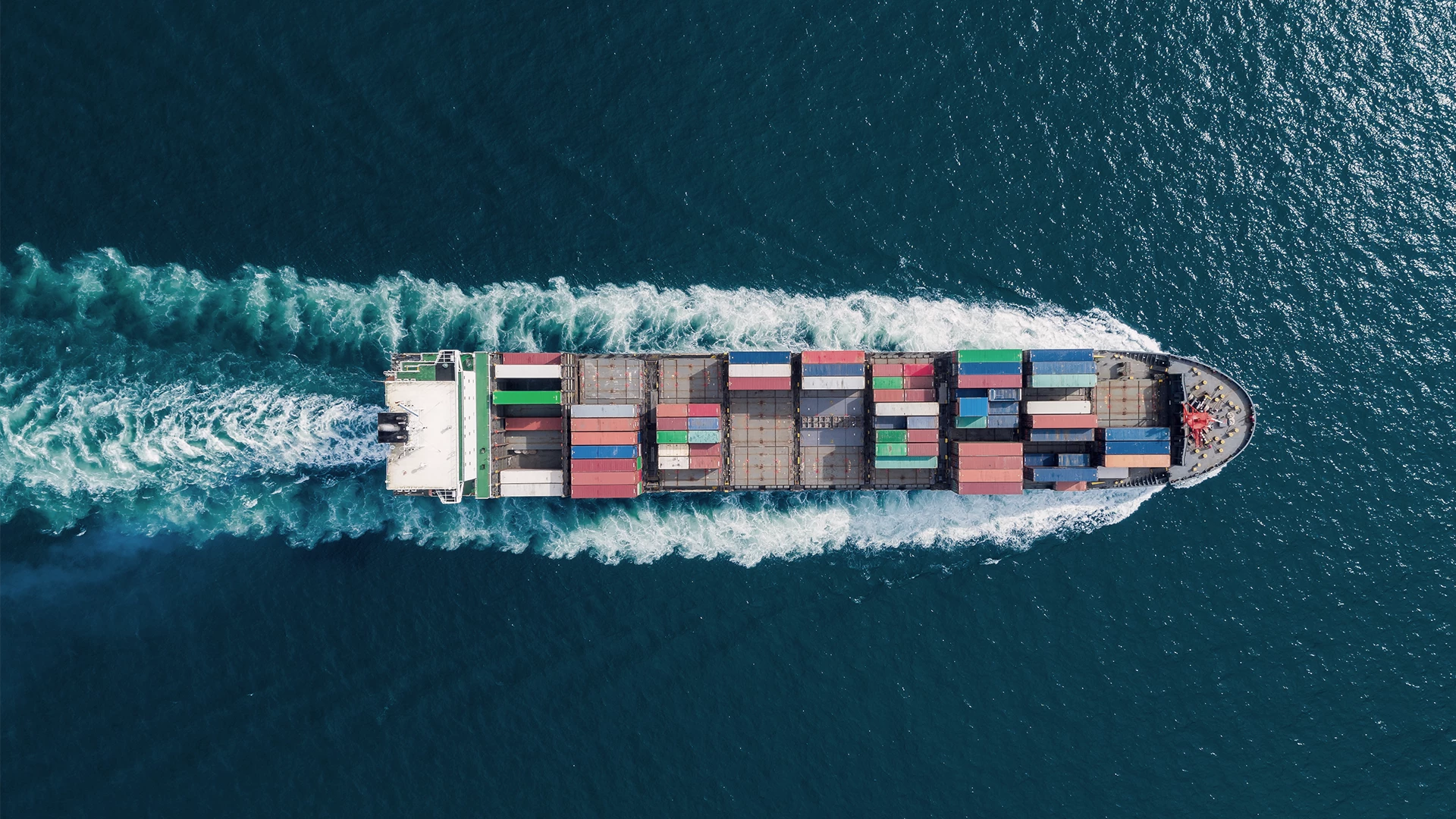Maritime transport is the backbone of global trade, facilitating over 80% of worldwide commerce by volume. In 2023, global maritime trade increased by 2.4%, reaching 12.3 billion tonnes, rebounding from the 2022 contraction. Projections from the latest UNCTAD report suggest an average annual growth rate of 2.4% through 2029. However, ton-miles (the unit of freight transportation equivalent to one tonne moved one mile) have increased, up by 4.2% due to disruptions in key routes such as the Suez and Panama Canals. This has strained supply chains and increased greenhouse gas (GHG) emissions. Geopolitical tensions and the rising frequency of extreme weather events further threaten stability, with their impact extending into 2025 and beyond.
Key trends affecting shipping’s transition
Decarbonisation efforts
The shipping industry, which accounts for approximately 3% of global greenhouse gas emissions, is intensifying efforts to reduce its carbon footprint. At the IMO’s MEPC83 talks, member states agreed to adopt a legally binding Net-Zero Framework that includes a Global Fuel Standard (GFS) for ships and a global emissions pricing mechanism. The IMO Net-Zero Framework is due for adoption in October 2025 before entering into force in March 2027 and taking effect from 1 January 2028.
The GFS is a yearly emission intensity reduction target calculated using a well-to-wake approach, which covers the emissions that result from fuel production and distribution, fuel used on board and all emissions produced therein. Ships failing to meet the target will pay for every extra tonne of CO2 equivalent emitted, while ships outperforming the target will be rewarded. Part of the revenues generated from these penalties will be dedicated to green fuels development. The Net-Zero Framework allows for a private market where low-emission vessels can sell CO2 equivalent surplus units to underperforming vessels.
At the European level, FuelEU Maritime—a regulation intended to lower GHG emissions from ships operating within EU waters—entered into force on 1 January 2025. Norway, as a member of the European Economic Area (EEA), is expected to adopt the regulation, although implementation is currently delayed. Despite the delay, the Norwegian Maritime Authority advises shipping companies to prepare monitoring plans in line with EU deadlines.
Digitalisation and new technologies also contribute to the industry’s decarbonisation efforts, allowing for operational and cost efficiencies (e.g. route optimisation and minimisation of fuel consumption) and better data quality.
Change in fleet dynamics with the global energy transition
There is uncertainty around how fleet dynamics will develop long-term with the global energy transition. While demand for oil and coal is expected to decrease in alignment with the International Energy Agency’s (IEA) 1.5 degree scenario, demand for other bulk commodities, such as minerals and chemicals (e.g. methanol), may increase due to growing focus on renewable energy. The future demand for specific goods will dictate the capacity needed for different ship segments, impacting both the number of vessels in each segment and vessels’ capacity.
For vessels carrying commodities that will experience declining demand, repurposing, whenever possible, could mitigate stranded assets risk for shipping companies and potentially also avoid additional emissions from scrapping and newbuilding. For example, coal carriers can be relatively easily adapted to carry other dry commodities. However, other vessel types may not be repurposed that easily and the costs of repurposing the vessels versus ordering a new one should be carefully evaluated.



